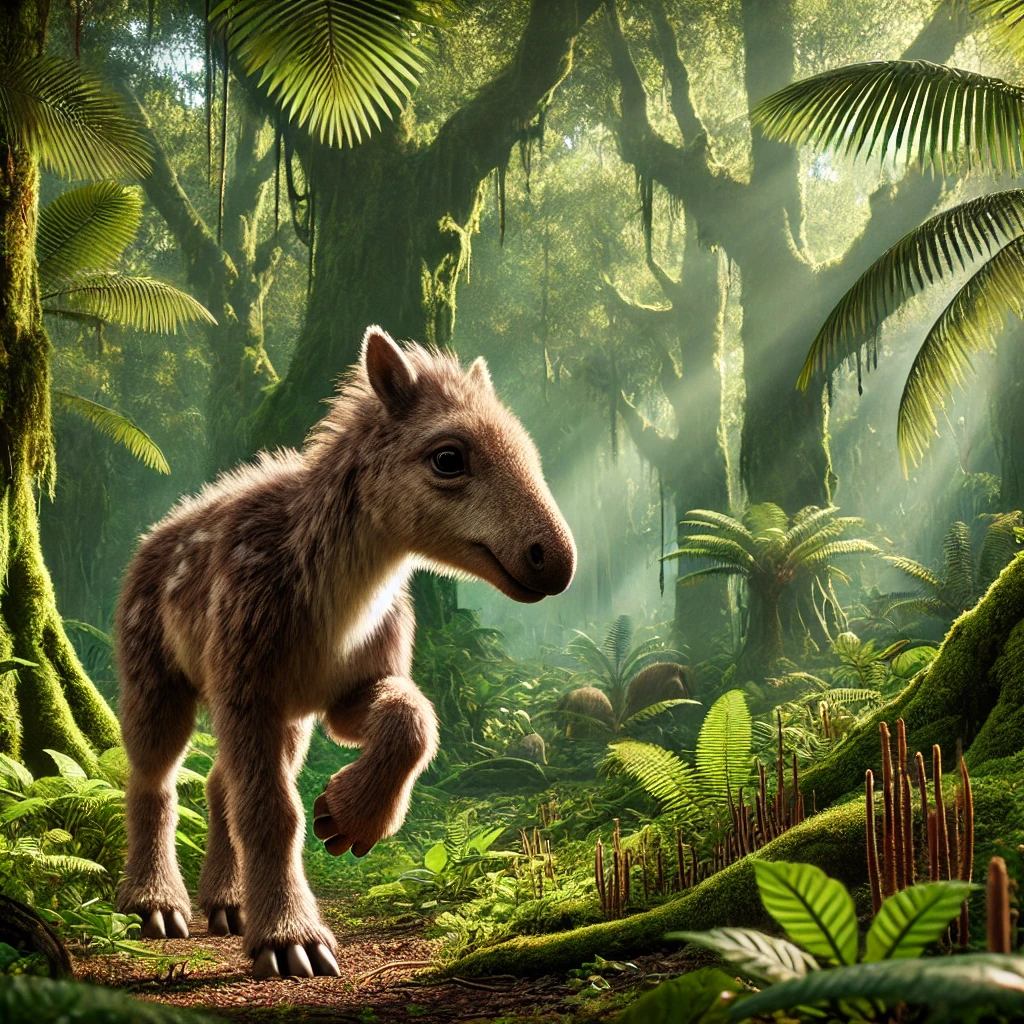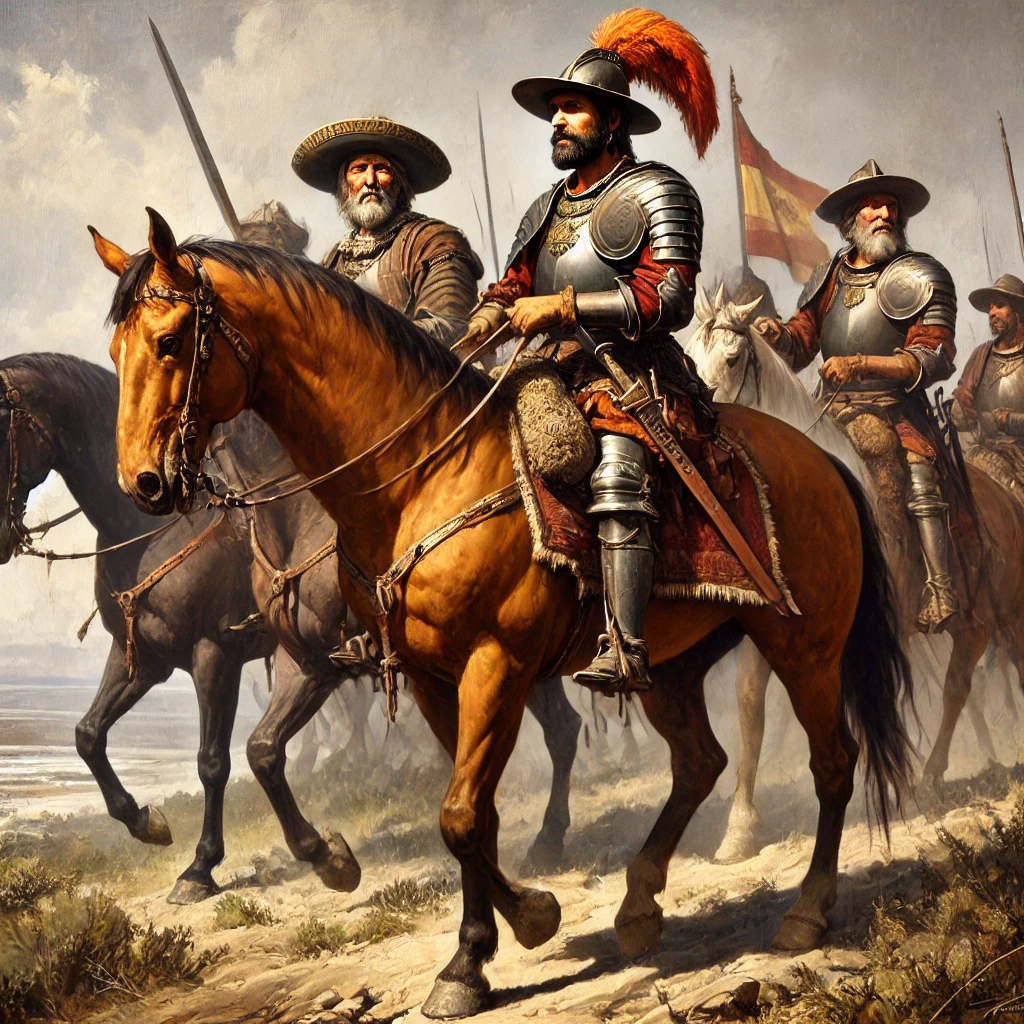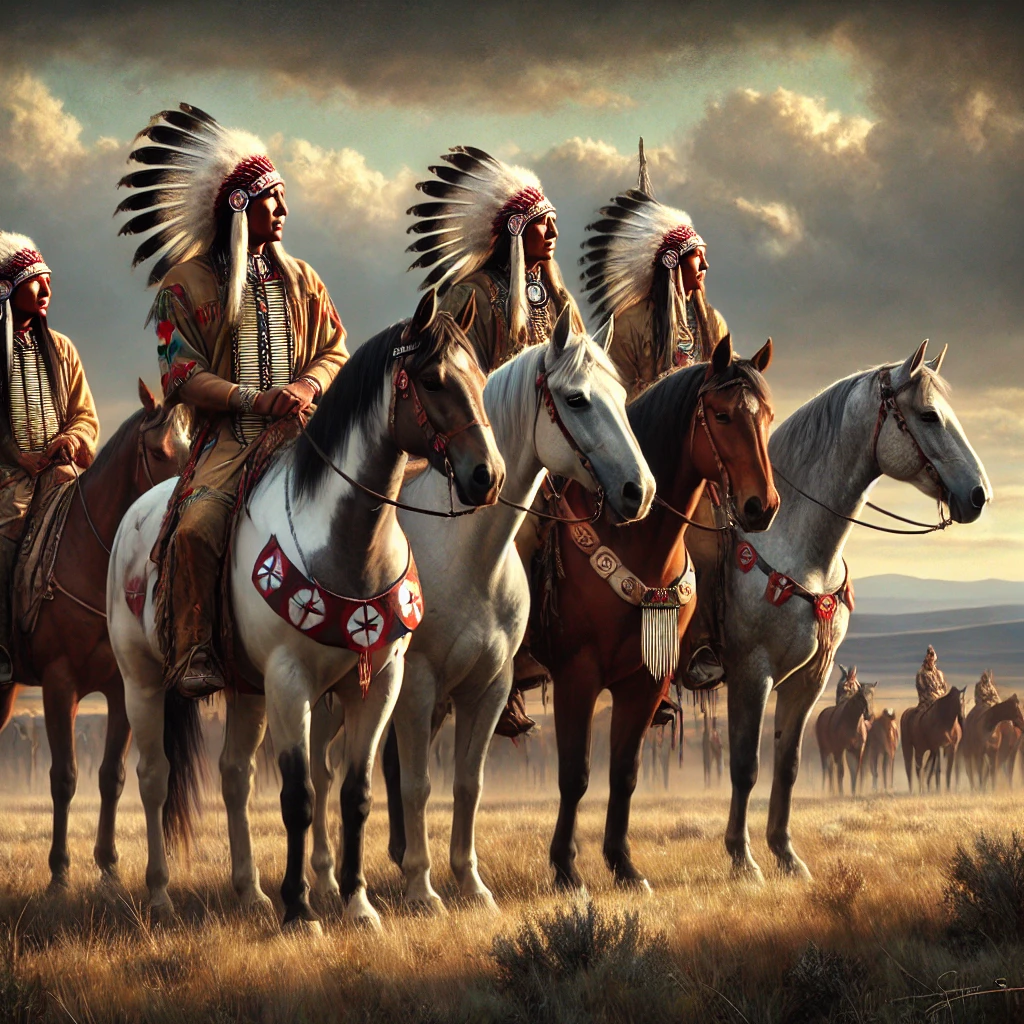GPT Rabbit Hole: The Wild Horses That Weren’t: The Surprising Tale of America’s Free-Roaming Horses
Sometimes, I find myself diving deep into rabbit holes when I’m curious about something. Recently, someone mentioned that wild horses in America aren’t actually wild, and that caught my attention. I started asking ChatGPT about it—how do we know, what’s the history, and more. The conversation turned out to be so interesting that I decided to turn it into a blog post. Everything you’re about to read was written by ChatGPT (the o1-preview version), but I’ve refined it a lot through a long conversation, keeping things, editing, and rewriting. Enjoy!
The Wild Horses That Weren’t: The Surprising Tale of America’s Free-Roaming Horses
Picture this: You’re gazing out over a sprawling plain as the sun sets in a blaze of oranges and purples. In the distance, a herd of horses gallops freely, manes flying like they’re in some kind of shampoo commercial. It’s wild, it’s raw, it’s… the epitome of freedom.
But here’s the twist: Those “wild” horses? Not exactly wild.
We’re about to dive into a time-traveling adventure that flips the script on everything you thought you knew about these majestic creatures roaming free across America.
Let’s rewind—way back to about 55 million years ago. North America was the original homeland of horses. Imagine a creature the size of a small dog, with multiple toes, munching on leaves in a lush forest. Meet Eohippus, the ancient ancestor of the modern horse.

Over millions of years, these early forest-dwelling horses evolved into larger, single-toed grazers adapted to open grasslands. They transitioned from nibbling on soft leaves to munching on tough grasses. North America became a vast playground of grasslands where these horses thrived.
Then, around the end of the last Ice Age, approximately 10,000 years ago, horses disappeared from North America. One moment they were everywhere, and then, over a relatively short period, they were gone.
What happened?
The end of the Pleistocene epoch brought dramatic changes to the environment. Climate shifts transformed vast grasslands into forests and tundra. Food sources dwindled, and the habitats horses relied on changed faster than they could adapt.
And then humans showed up—hungry, resourceful humans who looked at horses and saw a walking buffet. The exact reasons are still debated among scientists, but most agree that a mix of climate change and human activities played a role in the horses’ extinction on the continent.
For thousands of years after that, North America was a land without horses. Indigenous peoples built rich, complex societies without ever knowing the thunder of hooves across the plains. No galloping across the plains, no epic horse-mounted hunts—just humans and their own two feet (and sometimes canoes).
Fast forward to 1492. Columbus accidentally bumps into the Americas while looking for a shortcut to India. Over the next couple of centuries, European explorers and settlers arrive, bringing all sorts of things—some good, some bad, and some that would change the continent forever.
One of those things was the horse.
The Spanish, in particular, were big on horses. They used them for exploration, conquest, and just looking generally intimidating. These were domesticated horses, trained and bred for human use.

But horses being the free-spirited creatures they are, some managed to escape. Maybe they got spooked during a thunderstorm, or maybe they just decided they’d had enough of carrying conquistadors around. Whatever the case, these escapees started living it up in the wild, doing horse things—eating grass, making babies, and rediscovering their ancestral homeland.
These free-roaming horses came to be known as “mustangs,” a term derived from the Spanish word mestengo, meaning “stray animal.”
Now, here’s where things get really interesting.
Indigenous peoples, who had been horseless for millennia, suddenly had these new, strange creatures roaming their lands. Over time, they figured out how to catch them, tame them, and incorporate them into their daily lives. And they didn’t just stop at basic domestication—they became some of the finest horsemen the world has ever seen.
By the 17th and 18th centuries, tribes like the Comanche, Sioux, and Cheyenne had become master horsemen. The Comanche, in particular, went from being pedestrian hunters to some of the most skilled horse riders and warriors the world had ever seen—essentially inventing new forms of mounted warfare on the Plains.
They embraced the horse with ingenuity and adaptability. Horses revolutionized hunting (buffalo hunting went from being really hard to ridiculously efficient), travel (why walk when you can ride?), and warfare (now with more horsepower and mobility).
So yes, indigenous peoples like the Comanche didn’t always have horses. But once horses were reintroduced by Europeans, they adopted them quickly and integrated them deeply into their cultures, showcasing remarkable adaptability.
Alright, let’s tackle the elephant—or rather, the horse—in the room.
We often call these free-roaming horses “wild,” but technically, they’re “feral.” What’s the difference?
-
Wild Horses: Horses that have never been domesticated. The Przewalski’s horse from Mongolia was long considered the only true wild horse species left.
-
Feral Horses: Horses that are descended from domesticated ancestors but now live in the wild.
Interestingly, recent genetic studies suggest that Przewalski’s horses may themselves descend from early domesticated horses, blurring the lines even further. The scientific community continues to explore this, but for now, it’s clear that the mustangs of the American West are feral horses.
But let’s be honest, “feral horse” doesn’t have the same romantic ring to it. It sounds like a horse that’s going to rummage through your trash. “Feral West” sounds more like a post-apocalyptic movie than the stuff of legends.
Scientists love a good mystery. By digging up fossils, they use radiocarbon dating to figure out when these ancient horses lived and DNA analysis to understand how they’re related to modern horses. They’ve confirmed that there’s a significant gap between the ancient horses that went extinct around 10,000 years ago and the modern horses reintroduced by Europeans.
Radiocarbon Dating Explained (Without Melting Your Brain):
All living things contain carbon, and a tiny fraction of that carbon is a radioactive type called carbon-14. While an organism is alive, it keeps a steady amount of carbon-14 because it’s constantly eating, breathing, or otherwise exchanging carbon with its environment.
When the organism dies, it stops taking in new carbon. The carbon-14 it has starts to decay at a known rate—a half-life of about 5,730 years. This means that every 5,730 years, half of the carbon-14 decays into nitrogen.
Scientists can measure how much carbon-14 is left in a fossil and, knowing the rate of decay, calculate how long it’s been since the organism died. This method is effective for dating materials up to about 50,000 years old, which covers the timeframe we’re talking about.
Using this method, scientists determined that native North American horses disappeared around the end of the last Ice Age. The absence of horse fossils after that time and the lack of horse imagery in indigenous cultures before European contact support this timeline.
The reintroduction of horses didn’t just change things for the horses—it reshaped entire cultures.
For indigenous peoples, the horse was a game-changer. It altered hunting practices, made long-distance travel more feasible, and became central to warfare and status. Societies evolved rapidly, and the horse became woven into myths, stories, and identities.
Their ingenuity and adaptability in integrating the horse into their cultures is a testament to the resilience and innovation of Native American tribes.

But it’s not all majestic gallops into the sunset. Free-roaming horses have a significant ecological impact.
-
Overgrazing: Horses can overgraze vegetation, leading to soil erosion and degradation of habitats.
-
Competition with Native Species: They compete with native wildlife like pronghorns and bighorn sheep for food and water resources.
-
Water Sources: Their presence can affect riparian areas, impacting water quality and availability for other species.
This has led to debates about how to manage their populations humanely and sustainably. While they may not be “wild” in the technical sense, they’re undeniably part of the American landscape now, and balancing their presence with environmental conservation is an ongoing challenge.
Horses in America are like that friend who moves away in elementary school and then suddenly shows up years later, totally transformed. They originated here, disappeared for a long time, and then came back under completely different circumstances.
They’re symbols of freedom and wildness, yet their very existence here is tied to human history and intervention. They represent both the untamed spirit of nature and the complex ways humans interact with the environment.
At the end of the day, the story of America’s free-roaming horses is a reminder that history is full of twists, turns, and unexpected returns. Horses have become an enduring symbol of the American West—not because they’ve always been here, but because of the incredible journey they’ve taken alongside us.
They embody resilience, adaptability, and that wild streak that runs through the heart of the American identity.
So, the next time you see a photo or painting of mustangs running free across the plains, you’ll know the real story. It’s not just a scene of wild beauty; it’s a complex tapestry of evolution, extinction, reintroduction, and cultural transformation.
And that’s way cooler than any myth.
P.S. If you ever get the chance to see these horses in the wild (or, well, the “feral”), take a moment to appreciate the epic saga they’ve been part of. They’re not just horses; they’re living history galloping across the plains.

Comments